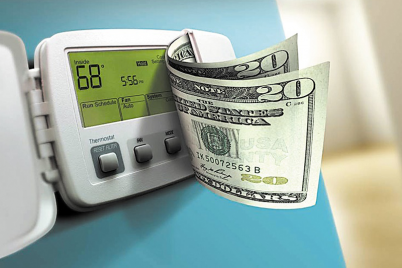BY JASON ALDERMAN
For millions of Americans, 2015 open enrollment for employer-provided benefits is right around the corner. While it may be tempting to simply opt for the same coverage you have this year, doing so could cost you hundreds – or thousands – of dollars in tax savings.
Have I captured your attention?
Find out if your employer offers flexible spending accounts (FSAs). They let you pay for eligible out-of-pocket healthcare and/or dependent care expenses on a pre-tax basis – that is, before federal, state, local and Social Security taxes have been deducted from your paycheck.
Also look for a commuter benefit plan, where you can pay for certain workplace mass transit and parking expenses with pretax dollars. By contributing to an FSA or commuter plan to cover expenses you would have paid for anyway, you reduce your taxable income by that amount, which in turn lowers your tax bill.
Here’s how it can add up: Say you’re married, jointly earn $90,000 a year and contribute 5 percent to a 401(k). If you contribute $2,000 to a healthcare FSA and $4,000 for dependent care, your resulting net income, after taxes, would be roughly $1,700 more than if you had paid for those expenses on an after-tax basis. Use the FSA calculator at www.dinkytown.net to evaluate your own situation.
And, with a commuter plan, you can use pretax dollars to pay for up to $130 a month in transit expenses (bus, train, vanpool, etc.) and $250 a month in qualified parking expenses and reap the same kind of tax benefit.
You can use a healthcare FSA to pay for any IRS-allowed medical expenses not covered by your medical, dental or vision plans. This includes deductibles, copayments, orthodontia, glasses, prescription drugs, chiropractic, smoking cessation programs and many more. Note: Over-the-counter medications, except for insulin, require a doctor’s prescription to be eligible. (See IRS Publication 502.)
Dependent care FSAs let you use pre-tax dollars to pay for eligible expenses related to care for your child, spouse, parent or other dependent incapable of self-care. Eligible expenses include:
-
Fees for licensed daycare and adult care facilities.
-
Amounts paid for services provided in or outside your home so that you and your spouse can work, look for work, or attend school full-time.
-
Before- and after-school programs for dependents under age 13.
-
Babysitting by relatives over age 19 who aren’t your dependent.
For some lower-income families, the federal income tax dependent care tax credit is more advantageous than an FSA so crunch the numbers or ask a tax expert which alternative is best. Note: You cannot claim the same expenses under both tax breaks.
Keep in mind these FSA restrictions:
- The IRS limits employee contributions to healthcare FSAs to $2,500 a year.
- The dependent care FSA contribution limit is $5,000 if you’re single or married filing jointly.
- Healthcare and dependent care account contributions are not interchangeable.
- Outside of open enrollment, you can only make mid-year FSA changes after a major life or family status change.
- You must re-enroll in FSAs each year.








